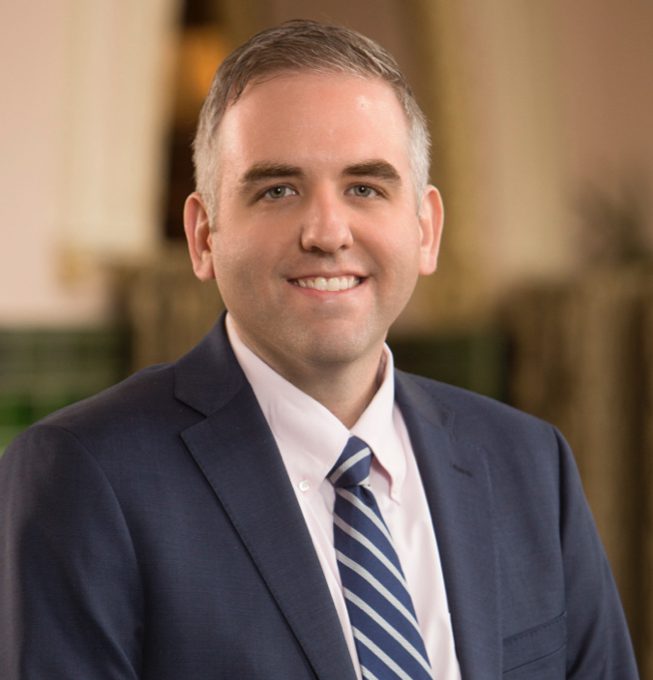September 12, 2023
Saving for College with a 529 Education Plan

State-sponsored 529 plans are a dependable, tax-efficient way to save for an expensive college education. But there are some nuances and rules you need to be aware of to maximize your money. In this episode of Buckingham Weekly Perspectives, Chief Investment Officer Kevin Grogan shares the basic guidelines and principles concerning this popular savings plan and answers commonly asked questions.
Transcript:
Kevin Grogan: With it being back to school time, I wanted to spend today's video talking about saving for college and specifically saving with 529 plans. So the agenda for today's video is I'll first talk about some of the basics related to 529 plans, and then I'll cover a couple of the common questions that we often get related to saving in these plans.
529 Plan Basics
Kevin Grogan: So in terms of the 529 plan basics, the way these plans work is that you save into the accounts with after-tax money and then the amount that you save gets to grow tax free until you withdraw the money. And as long as you withdraw the money for educational purposes, then the money gets to come out tax free. And one additional benefit is that some states actually offer an income tax deduction at the state level for making the contributions in the year that you make the contributions. But to be clear, in all states, the investment gets to grow tax free and in all states the money gets to come out tax free if it's used for education purposes. And the way 529 plans are structured is that they're actually sponsored by individual states. So every state has its own 529 plan. You can kind of think of it as kind of analogous to how each company has its own 401K plan and the way these 529 plans work is each state's plan will have its own set of investment options, will have its own set of costs associated with it. And again, it's very analogous to how each company has a different set of investment options and costs associated with their 401k plans. And so that's kind of an easy way to think about the structure of 529 plans.
What Happens to Unused Funds Left in a 529 Plan?
Kevin Grogan: So in terms of the common questions that we get, first, a most common question is what happens if I put money into a 529 plan and then I wind up not needing it for some reason, because again, my child winds up not going to college, gets a scholarship, things like that. And so the first thing to understand is that the penalty for pulling money out of a 529 plan for non-education related purposes is pretty steep. So you have to pay federal and state taxes on all of the earnings that were made in the account, plus a 10% penalty on all of the earnings in the account. So it is a pretty steep penalty to use 529 dollars for something other than educational purposes. But there are some workarounds that you can use if you wind up in a circumstance where you don't need all the dollars that you've saved to the 529 plan. So the first and most common workaround is that you can change the beneficiary of the account. So let's say, for example, you have three children. The first child winds up not going to college, second child winds up getting a full-ride scholarship that covers all of their education-related expenses and then the third child winds up going to an expensive college where they have to pay full freight. They don't get any financial aid and no scholarships. What you can do in that circumstance is change the beneficiaries of the first two 529 plans assuming you're saved into separate accounts for each beneficiary, you could change the beneficiaries of those first two 529 plans to your third child, and then that child could use all of those dollars. So that's a very clear example where changing the beneficiary can be really helpful in using up all of the dollars that you've saved across all of your children. Beyond that, you can also change the beneficiary beyond just kind of your immediate family. You can change the beneficiary to a niece, nephew or if you really wanted to stretch things out over a longer period of time, you could change the beneficiary to a future grandchild if you wanted to do it that way as well. And then finally, there's been a recent change in the law in that beginning in 2024, you can actually roll 529 dollars into a Roth IRA for that beneficiary. So there are a lot of limits and caveats associated with this Roth IRA provision. So be sure to look into that, check with an advisor before counting on the ability to roll things out into a Roth IRA.
Do I Have to Use My Own State’s 529 Plan?
Kevin Grogan: Second most common question is do I need to use my own state's 529 plan? And the answer here is that it depends largely based on the tax provisions in your specific state. So if your state offers a tax deduction for using your home state's plan, then in general it makes sense to go ahead and use that state's plan to take advantage of that income tax deduction from making the contribution. So that would be the first piece of advice. But beyond that, there are groups of people in different categories that can use any state's plan and they kind of fall into three different categories. So first category is the most straightforward. Those would be people who live in states that don't have a state income tax. And so in that circumstance, it doesn't really matter which state's plan you use. Those examples of those states would be Florida, Nevada, Tennessee and Texas. The second category would be states that don't offer any deduction regardless of which state's plan that you use. So examples there would be California and North Carolina. Finally, there are a group of states that offer deductions, whether you use the home state plan or another state's plan. And examples of those would be residents of Arizona, Missouri and Pennsylvania. So if you fall into one of those three categories where you can use any state's plan, we would generally recommend using the Utah plan because it has very low costs and a good mix of investment options available for savers to use. If you do have any questions or anything I've covered in today's video, please don't hesitate to reach out to your advisor.
If you have any questions please feel free to drop us a note.
For informational and educational purposes only and should not be construed as specific investment, accounting, legal, or tax advice. Certain information is based on third party data and may become outdated or otherwise superseded without notice. Third party information is deemed to be reliable, but its accuracy and completeness cannot be guaranteed. The time frame chosen because of the dates of available data. The inception of the AIEQ ETF was 2017. Indices are not available for direct investment. Their performance does not reflect the expenses associated with the management of an actual portfolio nor do indices represent results of actual trading. Information from sources deemed reliable, but its accuracy cannot be guaranteed. Performance is historical and does not guarantee future results. All investments involve risk, including loss of principal. Neither the Securities and Exchange Commission (SEC) nor any other federal or state agency have approved, determined the accuracy, or confirmed the adequacy of this information.
Category
InvestingContent Topics
About the Author

Kevin Grogan
Chief Investment Officer
Stay Connected With Buckingham
Want more resources like this? Click here to receive financial insights, articles, videos and webinar invitations.



